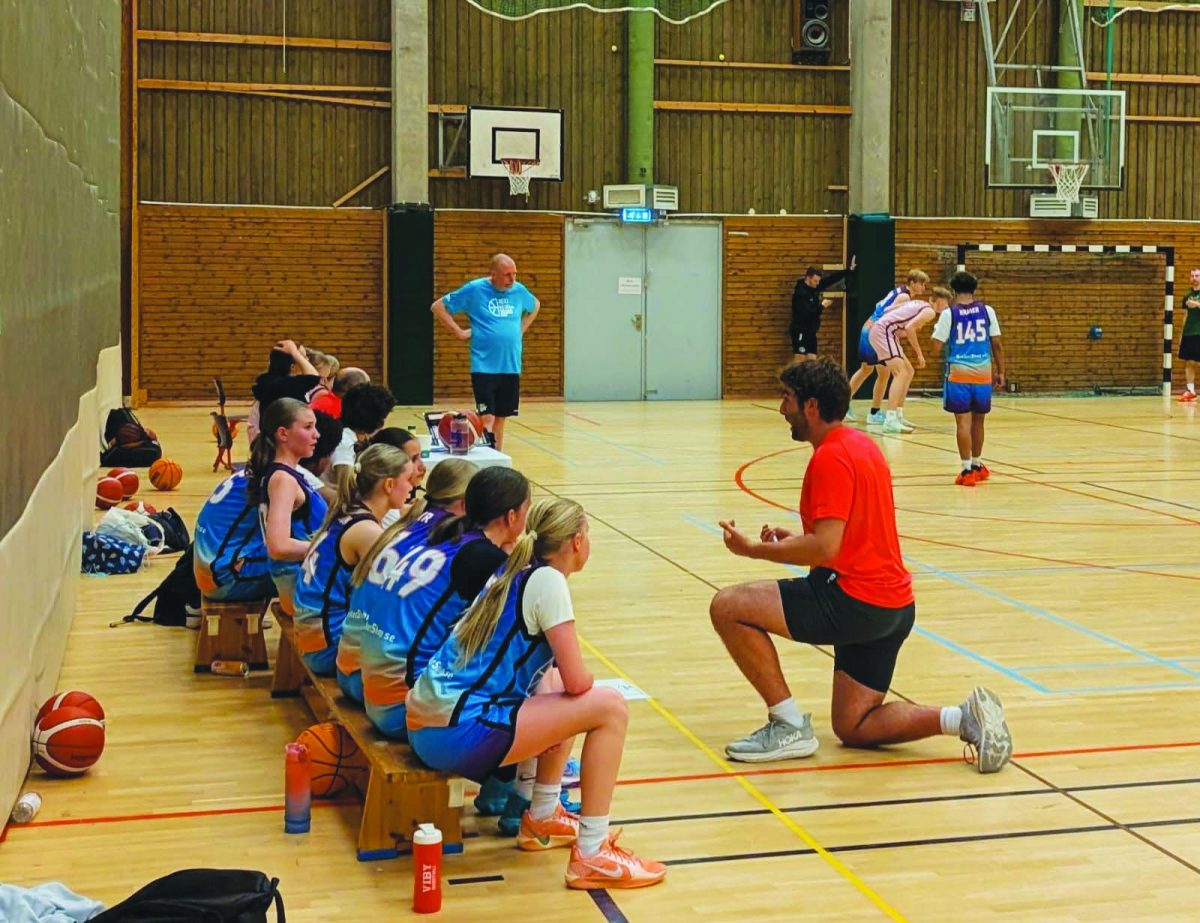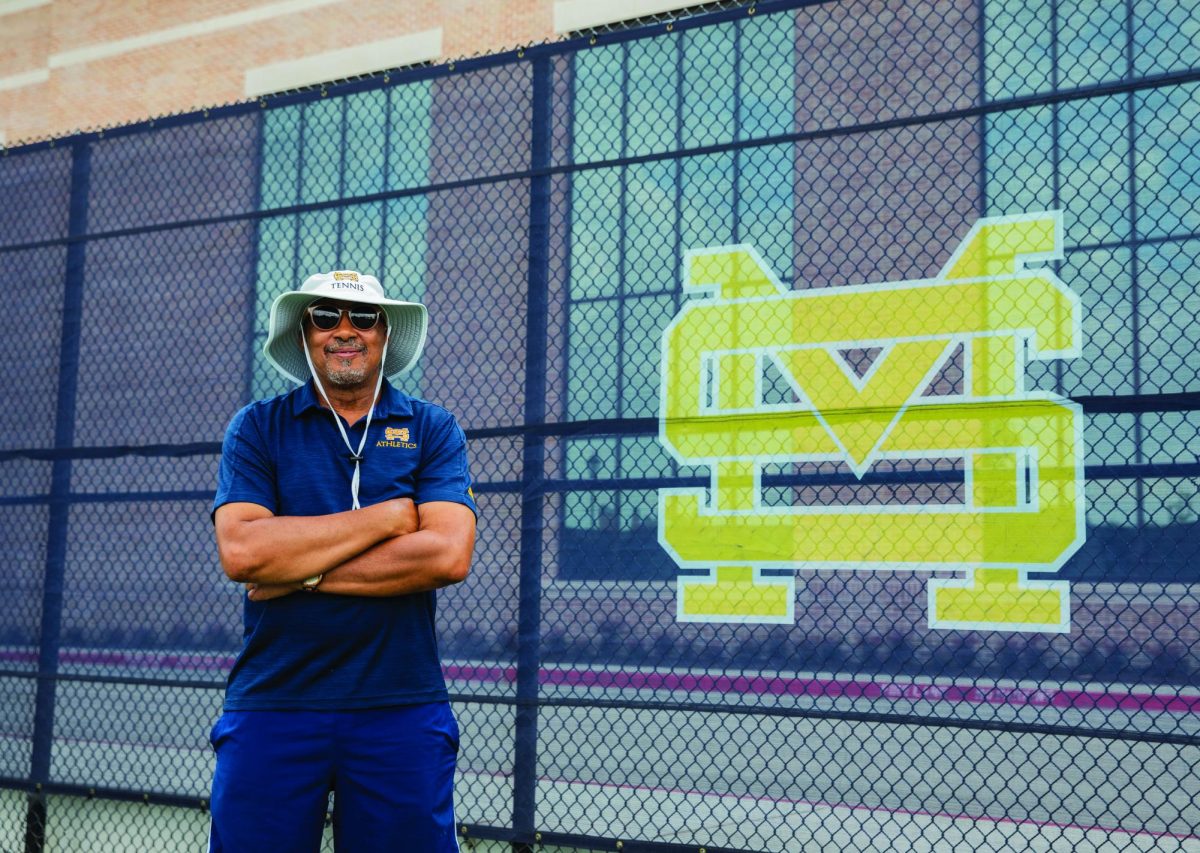Something’s different about this one.
You wake up at the same time. You eat the same breakfast. You get to school at the same time.
But something’s different.
You have the same pregame meal. You listen to the same music on the bus. You warm up the same way you always do.
But something’s different.
This time it’s not just another nameless, faceless opponent. This time you know the other players on the team. This time there’s history on the line.
For one team the memories of last year’s defeat burn bright in their minds as they try to take back victory.
For the other, the pressure to repeat weighs on them as they prepare to go win it again.
Everyone in the community is talking about it. It means a little bit more. It’s a rivalry game.
Rivalries push the competition to its climax, creating a thrilling environment to both play in and cheer for.
Associate headmaster John Ashton, a former football player, wrestler and coach, believes that rivalries are integral to the community.
“A rivalry we have with a school is a community-galvanizing thing,” Ashton said.
In addition, rivalries bring out the best in athletes as the high emotions of a critical game against a school with a lot of valuable history is one of the most exciting things in sports.
However, to Ashton, there is a point in which rivalries can be taken too far. This leads to overall disrespect for the players and ultimately the game.
“It’s important that we keep what is the goodness and the spirit of what competition and athletics is,” Ashton said. “If there is an over-exaggeration, then it goes to a bad place. When any team and or its community begins to drift to an extreme position, then (people) start to undermine what is good and virtuous about athletics.”
At school here, students are encouraged to control themselves, to maintain the integrity of the rivalry.
“At St. Mark’s we control what we can control,” Ashton said. “We are responsible for what we do and we have an expectation for how we operate. You all (the student body) do things the right way when I see you at games.”
This way of behaving is highlighted by the mantra “Cheer for St. Mark’s not against the opponent.” When students make signs, they are for Lions and not directed at a player on another team.
“I’m not a fan of the shirts and posters,” Ashton said. “I’m a fan of complete enthusiasm for your classmates who are out there competing because then, as fans, we get to share in that together.”
Behavior, particularly during crucial games, plays a significant role in the managing of rivalries. Statistically, rivalry games draw more attendees from various parts of the school, emphasizing the need to behave properly despite the heightened excitement for the game.
“Homecoming games are usually that way,” Associate Director of Athletics Josh Friesen said. “That game is alway highly attended. If you have families on Lion night and a tough opponent, it’s just going to be a larger group of kids, which causes more chaos.”
While administration strives to minimize behavioral issues during rivalry weeks, ensuring every student complies appropriately remains challenging. This is why there is often a collective effort among the boys themselves to hold each other accountable.
Friesen recognizes the significance of this, understanding that if any behavior goes unnoticed, it has the potential to initiate a series of negative actions that may harm the schools reputation.
“The boys set a good example for each other,” Friesen said. “When things go unchecked, and people are allowed to get away with it, all of a sudden, it begins to snowball. Then, all of the sudden, the masses are representing the school in the wrong way.”
Rivalries tend to weave themselves into multiple areas of life in and outside of school. Whether it’s texting with the other team, the big pep rallies or the special shirts and signs, a rivalry brings out an entirely different feeling. However, Friesen believes the true essence of rivalries start and end on the field.
“Where two teams challenge one another, and make each other better,” Friesen said. “Both teams get up to play each other because they know it’s going to be a tough game. That’s a true rivalry.”
Though rivalries are apparent in high school, many times they begin from an early age. For senior Mitchell Galardi, growing up in close proximity with other schools and competing against them naturally ignited a rivalry, just on a smaller stage.
“Since seventh grade or even before that when playing flag football against these teams, you have competed against these guys almost your entire athletic career,” Galardi said. “Often times, the rivalry is just built into the fact that you go to a different school that’s close and involved.”
Throughout a season, teams invest considerable effort into every game. However, when it comes to rivalries, some athletes adopt a different mindset.
To Friesen, the approach to rivalry games should mirror the consistent approach to all other games throughout the season.
“When we start to put other schools above, we legitimize them,” Friesen said. “If we can go into every competition with the same goal, let’s work hard, let’s play our game, and stick with the game plan. We’re going to be in great shape as a program.”














